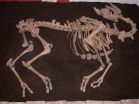(Press-News.org) A new genomic analysis of tissue from patients with prostate cancer has added more evidence that cells within metastases from such tumors can migrate to other body parts and form new sites of spread on their own.
Results of the analysis undermine anew long-held beliefs that cells with metastatic potential originate solely from the original or primary site of a cancer, according to the scientists who performed the study.
"The idea that metastatic tumors can seed and establish other metastatic tumors in patients is different from traditional theories that the primary tumor is solely responsible for disseminating cancer cells with metastatic potential," says William Isaacs, Ph.D., the William Thomas Gerrard, Mario Anthony Duhon and Jennifer and John Chalsty Professor of Urology at the Johns Hopkins Brady Urological Institute and a member of The Johns Hopkins Kimmel Cancer Center. "The new genomic information lends more support to the idea that treatments for metastatic cancers should be a combination of therapies that target a variety of genetic pathways."
Data used in the analysis, described in a report of the work online April 1 in Nature, were generated from a novel set of samples, collected in a Johns Hopkins autopsy program for patients with prostate cancer from 1995 through 2004. The new work comprised extensive genome sequencing and bioinformatics analysis of tumor samples by scientists at the Wellcome Trust Sanger Institute, University of Tampere in Finland and members of the International Cancer Genome Consortium, who found that the genetic makeup of cells within metastatic prostate tumors matched the makeup of new tumors from other metastatic sites.
Specifically, the investigators used a catalog of the genetic code of 51 tumors removed from 10 men who died from prostate cancer and were autopsied at The Johns Hopkins Hospital, as well as a sample of normal tissue from each of them.
Whole-genome sequencing on the samples showed that "even though a single cell begins the metastatic process, the disease becomes very heterogeneous as it spreads throughout the body over time, both between and among individuals. In individual patients, each metastatic site becomes an entity unto itself," says Isaacs, who also is a professor of oncology at the Johns Hopkins University School of Medicine.
The scientists found that five of the 10 men had patterns of mutations across several metastatic lesions, suggesting that these lesions were derived from not one but multiple metastatic sites. In seven of the men, the metastatic tumors were genetically more similar to each other than to the primary tumor.
The current findings expand on results of a Johns Hopkins-led study of autopsy samples published in Nature Medicine in 2009, conducted by scientist G. Steven Bova, M.D., who was then at Johns Hopkins and is now at the University of Tampere in Finland. That study showed similar patterns of genetic similarities across metastatic sites. The current study provides more detail and insight into the metastatic process, says Isaacs.
Isaacs says the current study relied on a novel set of tissue samples obtained from metastatic prostate cancer patients who, along with their families, agreed to be autopsied when they ultimately died from the disease. "Nearly every tissue and bone in the body was biopsied, and Dr. Bova and the autopsy team collected thousands of samples from these men who generously donated their tissues to science," says Isaacs.
Bova, Isaacs and their team at Johns Hopkins began the autopsy program in 1994 at a time when there was little access to metastatic prostate cancer tissue and when genome sequencing technology did not exist. "These samples, along with their annotations, are even more valuable now since we can use them in very sophisticated genetic studies such as the current one," says Isaacs. "The contributions these men made will hopefully produce more illuminating results that will pave the way for better treatment and prevention of prostate cancer."
INFORMATION:
Funding for the study was provided by Cancer Research UK, the Academy of Finland, the Cancer Society of Finland, the PELICAN Autopsy Study family members and friends from the Johns Hopkins Brady Urological Institute, John and Kathe Dyson, the National Institutes of Health's National Cancer Institute (CA92234), the American Cancer Society, the Johns Hopkins University Department of Pathology, the Women's Board of The Johns Hopkins Hospital, The Grove Foundation, the Association for the Cure of Cancer of the Prostate, the American Foundation for Urologic Disease, the Bob Champion Cancer Trust, the Research Foundation - Flanders (FWO), David Koch and the Prostate Cancer Foundation.
In addition to Bova, the study's leader, and Isaacs, the following scientists contributed to the research: Gunes Gundem, Peter Van Loo, Barbara Kremeyer, Ludmil B. Alexandrov, Jose M.C. Tubio, Elli Papaemmanuil, Victoria Goody, Calli Latimer, Sarah O'Meara, Kevin J. Dawson, Peter J. Campbell, Ultan McDermott and David C. Wedge from the Wellcome Trust Sanger Institute; Daniel S. Brewer from Norwich Medical School and the University of East Anglia in Norwich, U.K.; Heini M.L. Kallio, Gunilla Högnäs, Matti Annala, Kati Kivinummi, Matti Nykter and Tapio Visakorpi from the University of Tampere; Michael R. Emmert-Buck from the National Cancer Institute; Christopher Foster from the University of Liverpool and HCA Pathology Laboratories, London; Zsofia Kote-Jarai, Colin S. Cooper and Rosalind A. Eeles from the Institute of Cancer Research, London; Douglas Easton from the University of Cambridge in the U.K.; Hayley C. Whitaker and David E. Neal from Cancer Research UK; and the International Cancer Genome Consortium's Prostate Group.
As part of an effort to understand how an experimental drug for atherosclerosis causes the build-up of fat in the liver, scientists have developed a computer model that can predict how the rate at which liver stores fat in response to various situations. Being able to model liver fat storage gives researchers a way to predict the side effects of drugs and environmental factors at much earlier stages in the research and drug development process, possibly reducing the number of experiments involving animal models. Additionally, this computer simulation helps describe all ...
While testosterone replacement therapies may be controversial in males, new research in The FASEB Journal may extend this controversy to females too. That's because research involving mice, appearing in the April 2015 issue, suggests that there is an association between low levels of androgens (which includes testosterone), and atherosclerosis and obesity in females.
"We hope that our study will contribute to intensified research efforts on the definition of androgen deficiency in women (e.g. which levels of androgens in the blood should be considered too low?), the ...
Jacksonville, Fla. (April 1, 2015) - Training pediatric primary care providers to screen and assess depression and suicide risk in adolescent patients improved providers' confidence and knowledge of these conditions and increased frequency of screenings for this critical patient population. The study, published in the May/June issue of Academic Pediatrics, demonstrates an effective tool for improving recognition of adolescent depression.
"Adolescent depression is woefully underrecognized and undertreated," said Elise Fallucco, MD, a lead author of the study and child ...
The name sounds like something Marvin the Martian might have built, but the "nanomechanical plasmonic phase modulator" is not a doomsday device. Developed by a team of government and university researchers, including physicists from the National Institute of Standards and Technology (NIST), the innovation harnesses tiny electron waves called plasmons. It's a step towards enabling computers to process information hundreds of times faster than today's machines.
Computers currently shuttle information around using electricity traveling down nanoscale metal wires. Although ...
Annapolis, Md -- New research published today in Nature Communications provides insight into how large-scale deforestation could impact global food production by triggering changes in local climate. In the study, researchers from the United States and China zero in on albedo (the amount of the sun's radiation reflected from Earth's surface) and evapotranspiration (the transport of water into the atmosphere from soil, vegetation, and other surfaces) as the primary drivers of changes in local temperature.
The research is the first global analysis of the effects of forest ...
If you want the benefits of medical marijuana without the "unwanted side effects" of cannabis, new research should leave you on a high note. According to a research report appearing in the April 2015 issue of The FASEB Journal, fenofibrate, also known by the brand name Tricor®, may benefit a wide range of health issues, such as pain, appetite stimulation, nausea, as well as immune and various psychiatric and neurological conditions. This suggests that fenofibrate may be the starting point for a new class of cannabis-like drugs to treat these types of conditions.
"By ...
The Pacific Northwest is dotted by small, low-lying, coastal cities where populations tend to cluster. These communities can be isolated and are susceptible to devastation from major storms that bring substantial wind, waves and storm surge. With climate change, it is anticipated that storms will only become more frequent and intense, signifying a need to understand how the areas will be affected.
David Hill, a researcher at Oregon State University, is focused on the hydrology and hydrodynamics in coastal areas, which represent the boundary between terrestrial and marine ...
PHILADELPHIA-- Penn Medicine researchers are continuing their work in trying to understand the mechanisms through which anesthetics work to elicit the response that puts millions of Americans to sleep for surgeries each day. Their most recent study looked at ketamine, an anesthetic discovered in the 1960s and more recently prescribed as an anti-depressant at low doses. Through collaboration with the University of Pennsylvania's department of Chemistry and scientists at the Duke University Medical Center, researchers at Penn's Perelman School of Medicine have identified ...
ALEXANDRIA, VA -- An updated clinical practice guideline from the American Academy of Otolaryngology--Head and Neck Surgery Foundation published today in Otolaryngology-Head and Neck Surgery identifies quality improvement opportunities and explicit actionable recommendations for clinicians managing adult sinusitis, including a greater focus on patient education and patient preference.
"More than ever before, there is a prominent role for shared decision-making between patients and clinicians when managing adult sinusitis--especially in deciding whether to use antibiotics ...
In 2006 construction began on a new shopping centre in Tulln. The works unearthed various archaeologically valuable objects that were salvaged during rescue excavations. Among these objects was also the complete skeleton of a large mammal.
Large mammal uncovered during excavations in Tulln
"The partly excavated skeleton was at first suspected to be a large horse or cattle," says archaeozoologist Alfred Galik from the Institute for Anatomy, Histology and Embryology at the University of Veterinary Medicine Vienna. "But one look at the cervical vertebrae, the lower jaw ...


